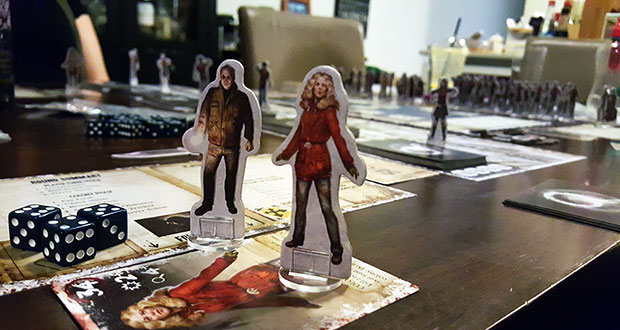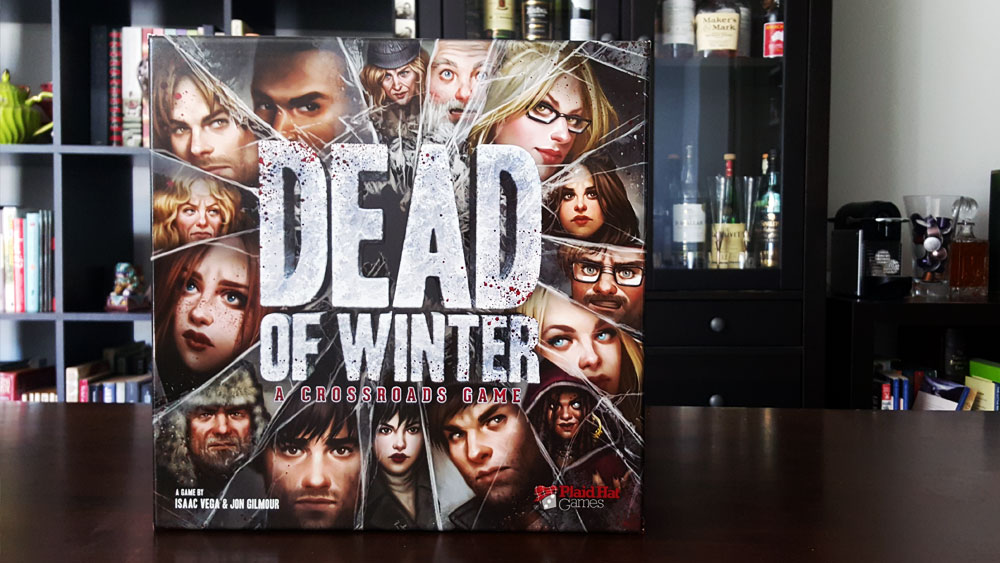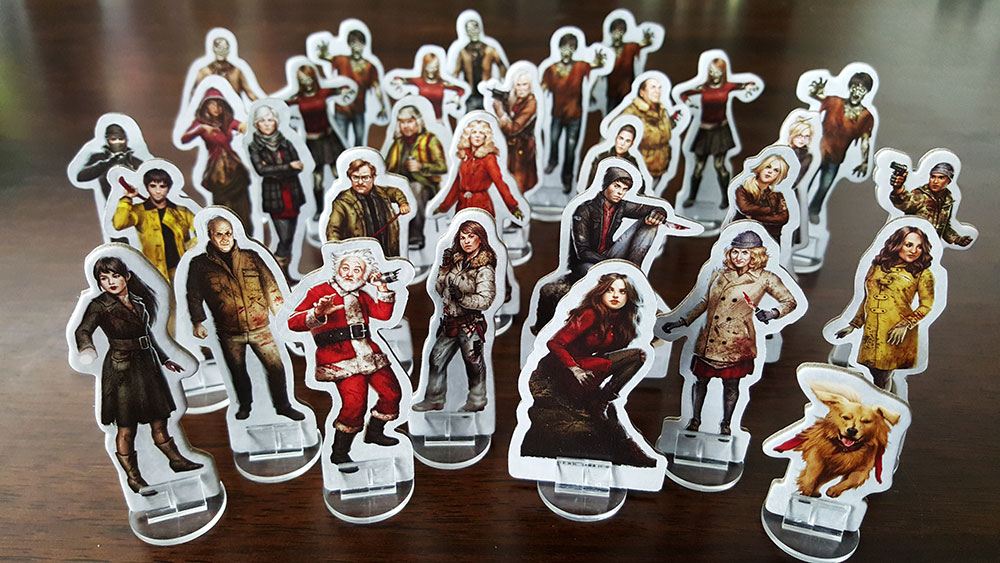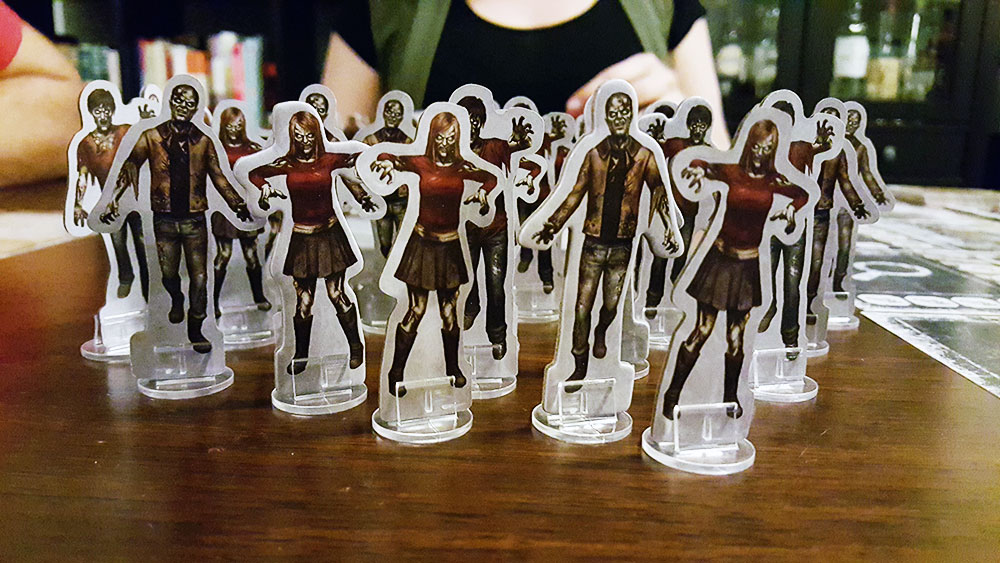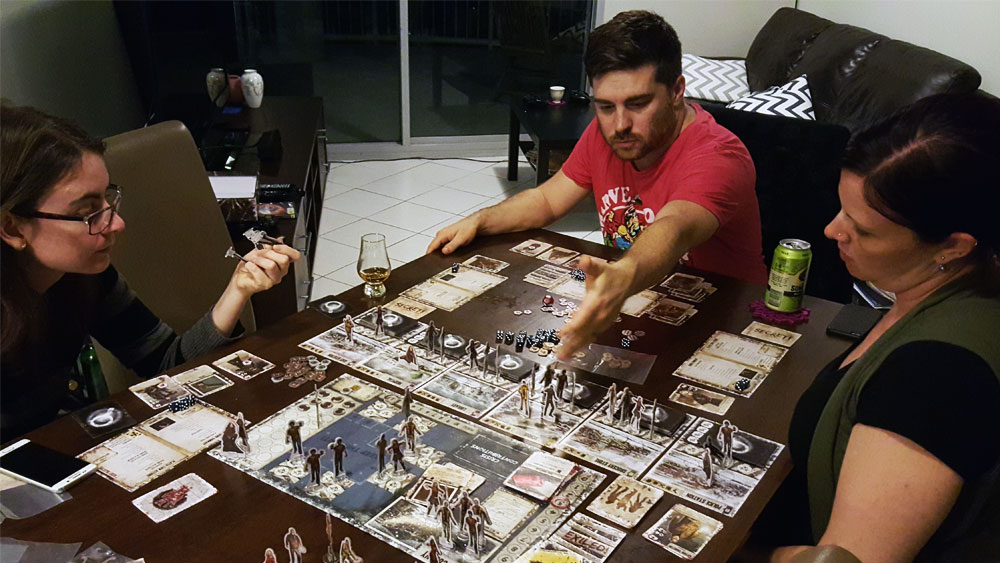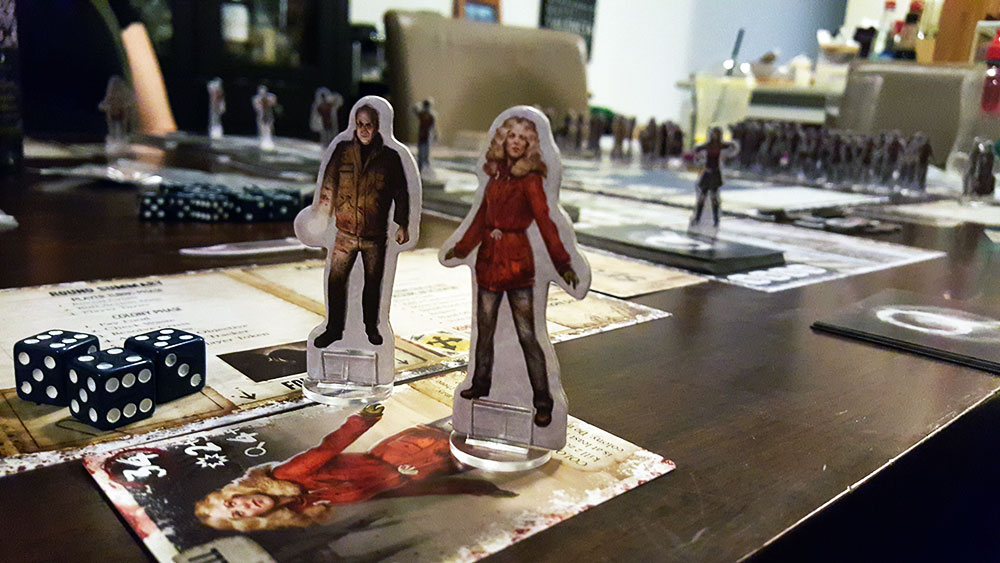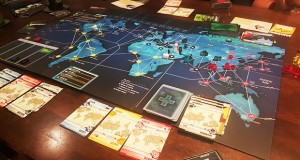Players: 2-5
Duration: 90+ min
Ages: 12+
Plaid Hat Games’ Dead of Winter was one of the most awarded and talked about board games of 2014. Set in the near-future where mankind has been overrun with zombies, the game revolves around a band of survivors who have barricaded themselves in a shelter called The Colony. Together, they must survive the elements, ward off the threat of starvation and work together to complete an objective that ‘wins’ the game.
Of course, like any good zombie movie worth its salt, there’s the ever present threat of the walking dead killing the survivors but the real danger is from the humans themselves. Each player has a secret objective that they do not reveal to the other players. Often this objective will pit them at odds with what the team is working towards so there is a struggle between self preservation and ‘the greater good’. Better still, there is also a chance that there is a betrayer in the camp who is doing more than just looking out for themselves; they’re actively doing what they can to sabotage the entire Colony.
Last night I played my first game of Dead of Winter. There were four players in total and none of us had any previous experience. We learned the rules by watching Rodney Smith’s Watch It Played video tutorial. With no experienced players it did probably take us about half an hour to get through our first round and fully understand the mechanics of the game but once we did that, it became very easy to follow.
I have to say that Dead of Winter is one of the most visually striking board games that I have ever played. I was looking forward to playing the game largely because of the positive feedback I had heard about the social mechanics but I hadn’t anticipated that it would look so good.
One of the key design decisions that has been made by the creators is to use paper cutouts for the characters instead of plastic figurines. By opting to go down this more cost effective path, the creators have absolutely gone to town and created a huge playable cast of survivors. I didn’t see a listing in the manual but I’m going to guess there’s roughly forty or more.
And what a band of misfits they are. The wonderfully evocative art design by Fernanda Suarez has really brought these characters to life. A quick snapshot of their occupation – a principal, a janitor, a mall santa, a golden retriever – and a character card that lists a unique talent goes a long way towards bringing these characters to life and getting invested in their survival.
Likewise, the sheer quantity of zombie characters (of which there are three variants) goes a long way towards setting the scene. When you’re approaching the end game and the board is covered with dozens of these things, it looks suitably chaotic and out of control.
The game itself is a pleasing combination of social interaction, resource management and a bit of luck when it comes down to surviving combat and travelling in and out of the colony. Each round presents a fresh ‘crisis’ that usually puts some sort of strain on the resources. A band of raiders stealing food for instance. Failure to deal with the crisis can reduce in lowered morale. Once the morale of the Colony bottoms out at zero, the game ends. As you’d expect, the death of a survivor or starvation can also affect the morale of the camp.
To ensure the survivors are well fed, have medicine to look after the wounded and firearms to neutralize the threat of zombies (or other players), trips need to be made out of the colony and into six different locations – a police station, a school, a petrol station, a library, a grocery store and a hospital. One of the most enjoyable aspects of Dead of Winter is its attention to detail and the way the locations are designed is a good example of that. The type of resources you’ll find at the police station (weapons, fuel) differ greatly from what you’d find at the hospital (food, medical supplies). Even the size and scale of each location is a factor when determining whether they become overrun by zombies.
The core mechanics of the game – survivors risking trips out of the Colony to scavenge for supplies to resolve the crisis and meet the team objective – is a great foundation for the game. Tension gets ratcheted up as there is only a finite number of rounds to meet the victory condition and gradually the swarm of zombies expands and threatens to overrun the base. What puts the game over the top and made it such a widely discussed favourite of so many players is the Cross Roads cards.
Every round, a Cross Roads card is drawn from a pile and depending on the conditions for activation on the card (e.g. is ‘X’ player on the board? , is someone currently at the hospital?) it may trigger an event which can alter the course of the game. These cards unlock a narrative passage which is – by board game standards – surprisingly graphic and mature in content. Without wishing to spoil too many of the scenarios, the game we played last night had scenes describing acts of suicide and patricide. Even Cross Roads cards that don’t necessarily have such visceral content can pose significant moral challenges to the group. One card introduced a survivor to a family of four who pulls them out of a burning building. The player is presented with the option of telling them about the Colony and bringing them back to the base but of course this means there are now four more mouths to feed.
The Cross Roads cards are really what elevate the experience of Dead of Winter and as with everything else in the game, Plaid Hat has been very generous with the content and created dozens of scenarios which would take many, many playthroughs before you had a chance to experience them all.
Considering the number of game mechanics and modifiers at play, Dead of Winter is surprisingly easy to get your head around. The social aspects of the game encourage bartering, strategizing and deception. There’s the right amount of luck involved to keep players of differing levels of experience in a relatively even playing field and even if a player has all their survivors killed, a fresh one is immediately introduced which means everyone stays in the game to the finish. The game we played had a betrayer who amassed a large army of followers before dramatically turning on everyone in a bloody massacre starting with the principal. The game came down to the final round with food supplies depleted and morale down to a single point. A lucky throw of the dice saw the victory condition met in a dramatic last gasp scenario. It was the perfect introduction to the game.
Dead of Winter was everything I hoped it would be and worthy of the praise that gets heaped upon it. It’s easy to learn but is so spoiled for content that there should be plenty of fresh scenarios, Cross Roads modifiers and new characters to play to keep you coming back.
 The FAT Website est. 1999
The FAT Website est. 1999

